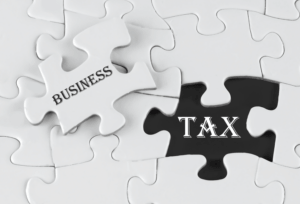
Let’s assume that a sporting goods store begins the month of April with 50 baseball gloves in inventory and purchases an additional 200 gloves. At the end of the year 2016, the company makes a physical measure of material and finds that 1,700 units of material is on hand. The main reason for adopting FIFO is that this method accurately models the actual movement and value of goods. This would be clear from the values of COGS as well as ending inventory. It’s worth noting that LIFO doesn’t really reflect the actual movement of goods, which is often selling the oldest first. While FIFO is a wonderful method for assessing the value of your inventory, it’s not the only one you can use.

( . Cost of materials on hand at the end of the year – FIFO method:
In these situations, FIFO presents the most relevant and accurate picture of inventory flows and costs on financial statements. But it does require strong organizational processes and documentation to track inventory in-flows and out-flows accurately. Put systems in place during the transition to set your business up for FIFO success. With proper documentation, you can directly match cost of goods sold to the actual purchase costs of inventory sold during the period. This also allows you to accurately determine the cost basis of ending inventory.

Which method of inventory is better FIFO or LIFO?
This method ensures that products with shorter shelf lives—such as skincare, hair care, and hygiene products—move efficiently while maintaining accurate inventory how to calculate fifo inventory valuation. In this article, we’ll break down how FIFO and LIFO work, their benefits and challenges, and how to calculate inventory costs using each method. As stated previously, FIFO periodic and FIFO perpetual will give you the same result for cost of goods sold and ending inventory.
Potential Cash Flow Advantages
- The FIFO method assumes the first products a company acquires are also the first products it sells.
- However, FIFO can lead to increased tax liabilities due to higher reported profits during periods of inflation.
- The opposite to FIFO, is LIFO which is when you assume you sell the most recent inventory first.
- Keeping track of the number of units remaining will help to ensure that you take your units from the correct date and calculate ending inventory properly.
- The FIFO method is also provided in the Indian accounting standard for inventory valuation.
- When you sell items, calculate your Cost of Goods Sold (COGS) using the oldest inventory prices first.
It ensures that older components are used in production first, guaranteeing the quality of the final product. The FIFO calculator used in this industry can help streamline production costs and manage inventory effectively. This practice not only maintains the efficacy of the drugs but also ensures compliance with safety standards. Meaning, you move the latest items that arrived into your inventory first. Last In First Out, or LIFO is particularly useful if you want to decrease the amount of taxed income. This formula calculates the total cost based on the batch arrangement.

The basic concept of the FIFO method is that the oldest items in inventory are sold first. This means that the cost of goods sold (COGS) is based on the costs of the earliest goods purchased, while the ending inventory represents the costs of the latest available items. A business might choose LIFO over FIFO to reduce tax in inflationary times as it allows to match higher costs with current revenues. During inflation, FIFO can mean a higher tax bill as it shows higher profits because you are selling older stock purchased at a lower cost. These calculations are vital for accurate financial reporting and inventory management.
Companies that deal with rapidly changing raw material prices benefit from LIFO because it allows them to adjust COGS in response to market conditions. This flexibility benefits manufacturing industries such as metals, fuel, and construction materials, where price fluctuations impact profitability. Companies looking to minimize taxes often prefer LIFO, which allows them to deduct the cost of newer, higher-priced inventory. This is particularly important for industries handling perishable goods, pharmaceuticals, and fast-moving consumer products, where selling older stock first prevents spoilage and obsolescence. When prices are rising, FIFO results in lower COGS because older, cheaper inventory is used for calculations.
Why Is the FIFO Method Popular?
Since FIFO follows https://www.bookstime.com/ a natural inventory movement, it simplifies warehouse operations and aligns with real-world logistics. If you need help with other Managerial Accounting Topics check out our archive or check out our list if you Need help with your accounting classes through the links to see our other offerings. When I think of FIFO, it reminds me of milk being sold at the grocery store. Charlene Rhinehart is a CPA , CFE, chair of an Illinois CPA Society committee, and has a degree in accounting and finance from DePaul University.
These factors or components include the beginning inventory (at the beginning of an how is sales tax calculated accounting year), the purchases, and the sales figures. The Ending Inventory formula refers to the mathematical equation that helps calculates the value of goods available for sale at the end of the accounting period. Usually, it is recorded on the balance sheet at a lower cost or its market value. Under LIFO, older, lower-cost inventory remains on the balance sheet indefinitely, which may undervalue the true cost of remaining stock. This can be misleading, especially for companies that need accurate financial data for asset valuation, budgeting, and investor reporting.
No comment yet, add your voice below!